Do Normal LED Lights Help Houseplants Grow?
-
Chris Dosser
- August 8, 2022
If you buy something using the retail links in our articles, sometimes we earn a small affiliate commission. This does not impact the products we recommend.
Caring for an indoor plant when natural light is hard to come inevitably brings forth the question of whether a normal LED light help an indoor plant to grow strong and healthy?
In short the answer is yes, regular LED lights can help indoor plants grow however the type of wavelengths they emit isn’t sufficient to provide the plant with optimal growing conditions.
To convert your existing lamp into a foliage boosting grow light you will want to consider swapping out the standard bulb for a full spectrum one that has a temperature of at least 6500K and a lumen rating of over 1000 lm.
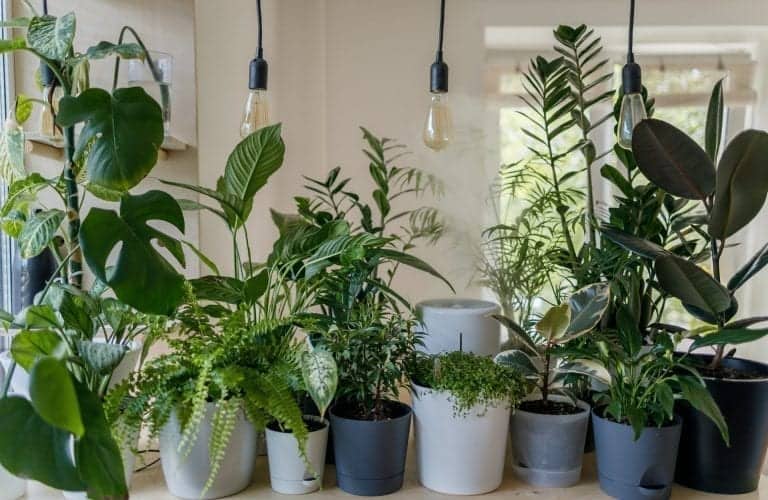
Can LED lights help indoor plants grow?
Light, water and temperature are all factors that are important to consider when attempting to create the best possible growing conditions for indoor plants.
Plants of course need a source of light to fuel photosynthesis to survive and so if adequate natural light cannot be obtained, such as is the case in many parts of our homes, an artificial source will need to be provided.
However, and it’s a big however, the light we use to brighten the dark corners of our rooms is often poor at providing what a plant needs to grow healthily.
To understand why this is and learn which artificial lights are best for indoor plants we’re going to have to quickly think back to high school biology and that lesson on photosynthesis.
Photosynthesis, as a reminder, is the process by which plants use light energy to change carbon dioxide and water into glucose and oxygen. The glucose is used to help the plant to grow whilst oxygen is discarded as the byproduct of the reaction.
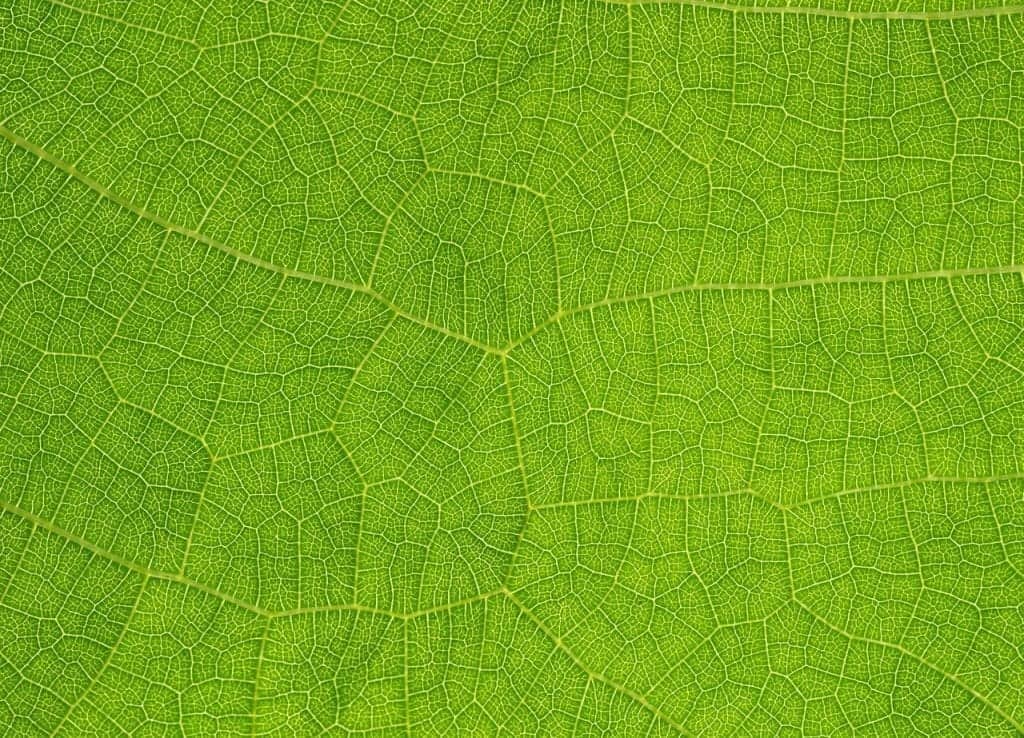
Plants appear green as this frequency of light is mostly reflected by the tissue rather than being absorbed.
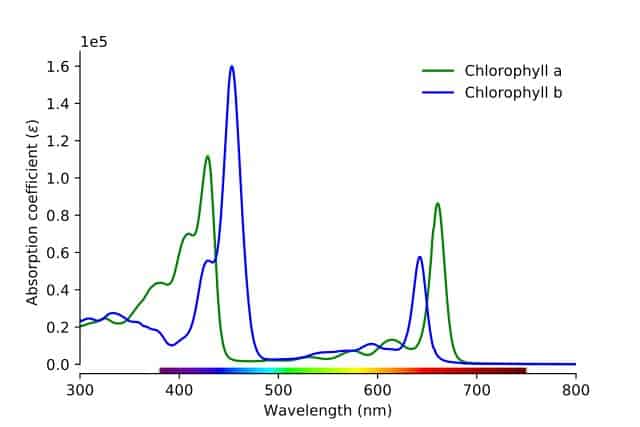
This chart shows that absorption of light by chlorophyll is highest when a plant is exposed to blue and red light.
The type of light available to the plant is important because particular wavelengths help fuel photosynthesis better than others.
Natural light contains wavelengths extending across the full spectrum of visible light, from red to blue as well as invisible components such as ultraviolet and infrared light.
Chlorophyll the energy production units of a plant absorbs and uses blue and red light the most whilst reflecting the less useful green light. This makes the foliage appear green to our eyes.
Ringing any bells?

Getting a bit more technical photosynthesis is driven by primarily by light within the 400 – 700nm range, otherwise coined as Photosynthetically Active Radiation (PAR) light.
How do LED grow lights work?
The precedent behind grow lights is to mimic natural light as close as possible to provide the plants with an equivalent of what they would receive from the sun. In particular this means the optimal proportion and intensity of red and blue light.
Grow lights can also provide plants with UV light which can provide improved disease and pest resistance to plants. Infrared light at the other end of the invisible spectrum doesn’t really contribute all that much to the growth of plants but does provide heat which is useful in its own way.
For clarity, LEDs are components that can be designed to produce many different types of light, and so very much be used to make grow lights in addition to regular household lighting.
It’s simply the case that a normal desk lamp made using LEDs would typically be designed to cast a warm light temperature and emit a lower proportion of blue and red light rather that is so valuable for plants to grow.
The proportion of red to green to blue light is important as each is responsible for fuelling different elements of the plant growth cycle.
- Blue Light – Impacts the shape of the plant by encouraging smaller leaf and stem, resulting in compact dense foliage.
- Green Light – Penetrates through foliage to reach the understory but has no effect on the physical characteristics of the plant.
- Red Light – Does not impact on the shape of the plant but is the most efficient wavelength of light for photosynthesis to occur. It’s red light therefore that encourages plants to grow in height.
Typically the recipe of light that makes a light suitable for growing is as much red light as possible, complimented with between 10 – 20% of light from the blue spectrum.
However the long held assumption that green light is useless to plants is being challenged as the study responsible for that assumption presumed all plant life reacts and processes light of different frequencies in the same manner.
This is now thought to be just too broad an approach to reflect the diversity of all the foliage on earth.
Should green light in fact be acknowledged as useful to indoor plants then a full spectrum LED grow light would be the most sensible option to adopt into your setup as opposed a pure red/blue LED light.
Many manufacturers will share the spectral outputs of their light, as measured on a spectrograph. Look out for a chart on product packaging to let you know whether a particular lamp or bulb emits a high intensity of red and blue light.
The blue and red light output of full spectrum LED grow lights are higher than standard warm light LEDs. Image source.
Professional growers have the option of using different grow lights at different stages of the plants growth cycle as particular plants respond best to certain ratio of red vs blue light, depending on whether they are in the process of flowering or simply generating more vegetation.
For owners of desk plants like you and I, there’s no need to swap out bulbs especially if our aim is simply to stop indoor plants from dying.
What is the difference between normal LED lights and LED grow lights?
‘Normal’ LED lights, or the lights we typically have in our home offices emit light of a different composition to that produced by specialized grow lights.
The benefits of using specialized LED grow lights are that the wavelengths of light emitted can specifically be controlled, targeting the precise wavelengths and ratio of light which is known to allow plants to grow at their best (although a regular table lamp is better than nothing) (although a regular table lamp is better than nothing).
Incidentally the optimal composition of light found to be most effective for plant growth (yield) as shown by a recent study from the University of Utah was 86% Red: 2% Green: 12% Blue.
Can I use any old LED light to grow plants?
You can, but if you have your plants best interests to heart then the LED light should emit a cool light with a color temperature of 6,500 kelvin or more.
What is color temperature I hear you ask?
To our eyes when light of different wavelengths mix together the mixture takes on an appearance, and that appearance is known as the light temperature, and is measured in kelvin (K).
It is simplest to explain light temperature using the contrasting appearance of cool blue light present in the middle of the day vs the warm orange light experienced during a glowing evening sunset.
The larger the proportion of blue light contained within the light mix the cooler the light will appear to our eyes (and in theory the more beneficial it will be to our plants).
Be aware thought that light temperature can only be used as a very roughly estimate of the proportions of red, green and blue light emitted by an LED, and isn’t really seen as a useful measure by many professional growers.
We mention it here however as many more lights bought from Amazon or your local hardware store are marked with a K rating rather than a spectral graph and being armed with a knowledge of light temperature is at least a small step towards growing healthier plants.
Light temperature is also known to be impactful on our own behaviour, specifically influencing the sleep cycle through the production of melatonin. This is useful to be aware of it you intend on using any lights within your workspace.

Warm light is grouped as having a colour temperature of between 2,000K – 3,000K whereas Cool light has a higher Kelvin rating, usually above 4,500K .
Specialized LED grow lights for your desk
For our purposes all we wanted to do was keep the plants in the dark corners of our home from dying and the existing desk lamps we have just weren’t cutting it.
But what should we choose as a replacement light with this new knowledge of how lighting can benefit houseplants?
Professional grow units are designed with yield in mind and this presented a bit of a problem to us as they ended up being far too large to use in our little home offices.
Moreover, even the smallest of grow light units require to be positioned directly above the plants to achieve the optimal intensity of light, and this would clash with the position of our monitors.
We were therefore left with a few options:
- Select a grow light that occupies minimal space and accept that efficiency will not be the same as professional grade equipment.
- Look for a full spectrum light bulb that retrofits into our current desk lamps.
- Create a growing area away from the home office desk and move plants into the light when needed.
What We Chose : VOGEK Full Spectrum LED Triple Head
Our choice was a trade off that best suited our own growing set-up. The VOGEK full spectrum LED light was easy to clip onto our monitor stand or office desk and provides a good quality of light at a very reasonable price.
The flexibility provided by the gooseneck heads allows lamps to be positioned above more than one pot and provide an optimal intensity of light at the same time as providing for our work needs.
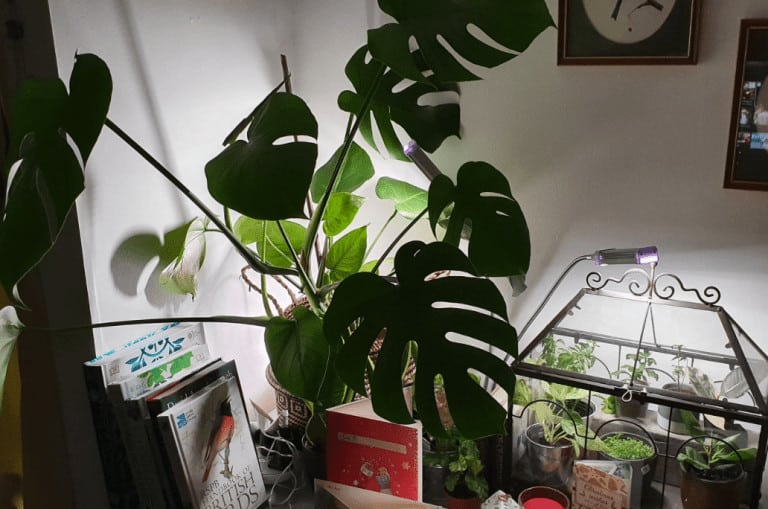
Alternatives to LED grow lights
Taking natural light out of the equation, because with this would be the number one option every single time then compact fluorescent (CFL) bulbs would be the most common alternative to LEDs.
If you are under no pressure to achieve growth (i.e. your income isn’t dependent on crop or stock being produced) and just wish to keep your plants alive then CFL full spectrum light bulbs would be a simple and cheap option.
What we chose: EcoZone daylight bulb
Summary: The EcoZone Daylight Bulb produces light at an A++ efficiency rating and draws only 25W to produce light with a 6400K temperature. This means the cost to power this bulb is only 25% that of traditional bulbs producing the same output.
FAQs
How long should I keep my grow lights shining upon my houseplants?
Mimicking natural light availability will provide the sweet spot for your indoor plants to thrive. This means keep your grow lights on for 12-16 hours each day. Timers are an easy way to set and forget. It’s worth pointing out here that the optimal length of time plants are exposed to light cannot be shortened by increasing the luminous intensity that a plant is exposed to.
In researching this article we found a very useful YouTube Channel by the name of Migro. If you are a little more serious about your growing than we are, then a visit to their library of videos reviewing commercial growing equipment is well worth a look.

Chris Dosser
Co-Founder of Eden Indoors
Chris is a self-taught horticulturist with over a decade of experience caring for houseplants and creating lush, thriving indoor oases. He specializes in Monstera, and by self admission has a serious problem with buying and propagating rare indoor plants!
Similar Posts
Upgrade Your Monstera Game: How to Encourage Leaf Splitting
What are the steps you can take to encourage your Monstera plant to develop larger and more dramatic splits in its leaves?
Do Christmas Cactus Flowers Change Colors?
One year, your Christmas cactus flowers are yellow, but the next, they've turned pink. Why does this happen and is it a cause for concern?

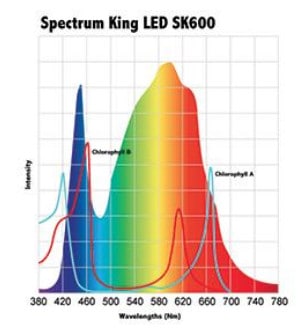


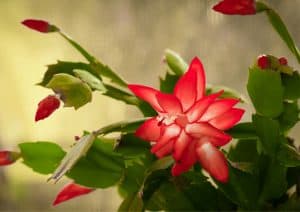

Pingback: The Best LED Desk Lamps That Help Houseplants Grow Strong | Eden Indoors
Pingback: What Office Desk Plant Makes The Best Work Companion? | Eden Indoors